CATHOLIC WORKER



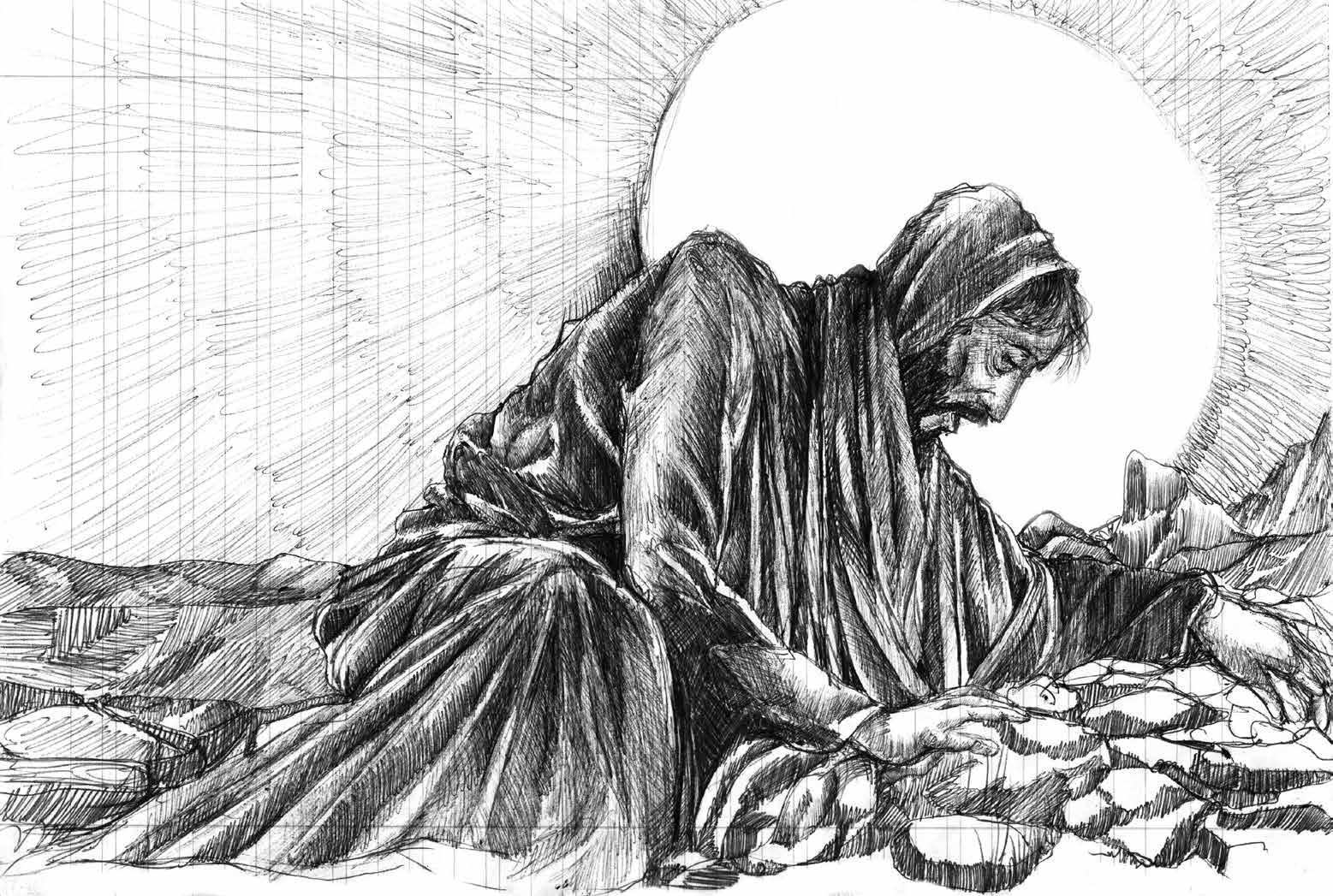
The great interest in the cosmos today, from the Big Bang theory to new discoveries and wonders of science, the galaxies revealed in new telescopes, new awareness of the mysteries of the animal world, and the whole world, is inspiring people to celebrate the wonders of the universe. Along with these awe-inspiring discoveries is a renewed interest in cosmology - a branch of metaphysics and astronomy that deals with the nature and origin of the universe.
The threats to our physical world, the wars and divisions, the plight of refugees across the globe, the stockpiling and sale of dangerous weapons, and uncontrolled technology, however, are hard to understand in the light of God’s plan for his creation. As the glory of the cosmos reflects God’s glory, surely our love for God and all that God has created should follow. Instead, we sometimes seem to be trying to destroy the world and its creatures.
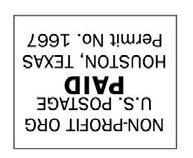
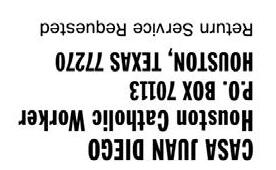
As we at the Houston Catholic Worker have been reading together Pope Francis’ Laudate Deum (his new Apostolic Exhortation on the climate crisis and our suffering planet), and as we have been trying to cope with the many refugees at our doors, I turned to Louis Bouyer, and his book Cosmos: the World and the Glory of God to reflect in the light of faith on what is happening around us and where to place our hope. In his book Bouyer reflects on God’s plan for the creation of the cosmos, on how the Bible (the story of the cosmos) came to be written, on the good and the fallen among the angels and humanity the Incarnation and Redemption, and on cosmic liturgy.
We hope and pray that the wisdom of Bouyer may help us to recognize the glory of the cosmos, how it is being ruined, and how it can be redeemed.
Like the words of Bouyer, Pope Francis in Laudato Si gives us hope and reassures us on God’s plan for the cosmos: “The Creator does not abandon us; he never forsakes his loving plan or repents of having created us. Humanity still has the ability to work together in building our common home” (#13).
Contemplation of the wonders of the universe brings us to reflect on the difficult question of how there can be so much destruction of persons, of creation, so much evil and suffering. As he reflects on the cosmos Bouyer asks, “Why are we and the universe with us under the sway of the powers of evil?” He reflects on what St. Paul describes aa the mystery of iniquity. Continued pg. 8
Casa Juan Diego is a Thanksgiving operation that works at the will and mercy of many people who hear the cry of the poor — and respond accordingly.
We cannot give enough thanks to those of you who have responded to the crisis of the increased numbers of refugees who have been coming to Casa Juan Diego, especially during the past year, those who assist with cooking, with preparing bags of food for our food distribution which includes so many refugees new to the country, those who give rides to our guests who need to get to medical appointments, the doctors who volunteer in our clinics, those who assist with translation in the clinic, those who contribute items for the basic needs of our guests that we list on our web site, and those who participate in the work through financial contributions without which we could not do so much.
Casa Juan Diego is an ongoing miracle. It might be truly named Casa de Milagros (Casa of Miracles) because it continues in the face of many challenges. We never get accustomed to these daily miracles that surround our work that continues not on account of us, but at times, in spite of us. We are beggars like everyone else and would be lost without the Nazarene.
Truly Casa Juan Diego is a faith operation. Faith in the Good Lord and faith in people who always show up when we are about to lose our minds to take some responsibility. In fact, these generous people will be the caretakers of the future house of miracles.
We are at a loss on how to express our great need of giving thanks. The miracle of the loaves and fishes continues daily, thanks to many of you.
All we can say is
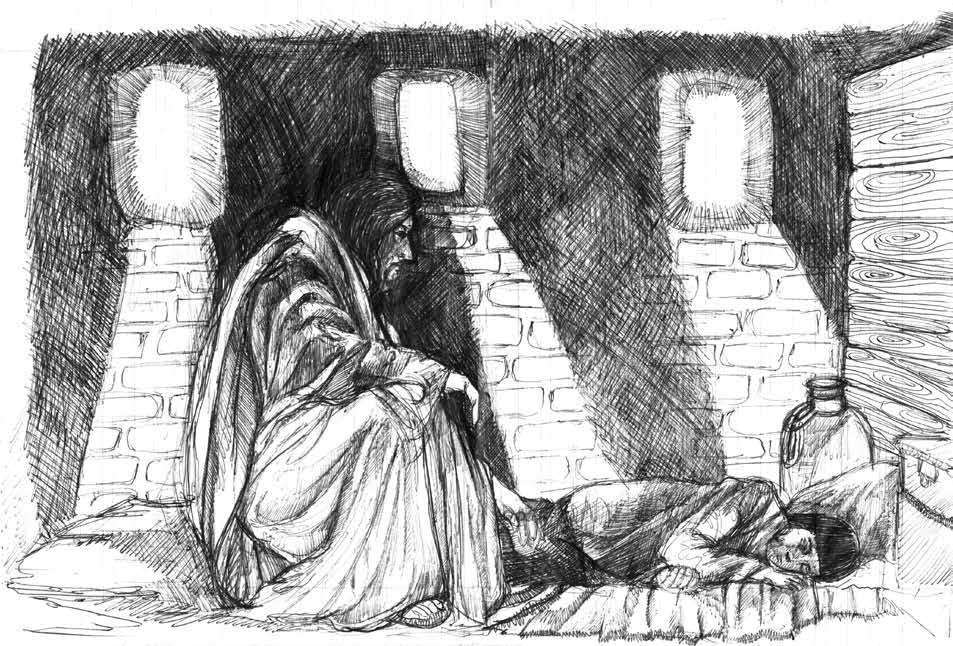
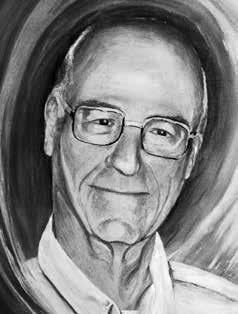
Casa Juan Diego was founded in 1980, following the Catholic Worker model of Dorothy Day and Peter Maurin, to serve immigrants and refugees and the poor. From one small house it has grown to ten houses. Casa Juan Diego publishes a newspaper, the Houston Catholic Worker, four times a year to share the values of the Catholic Worker movement and the stories of the immigrants and refugees uprooted by the realities of the global economy.
• Food Donation Central Office: 4818 Rose, Houston, TX 77007
• Women’s House of Hospitality: Hospitality and services for immigrant women and children
• Assistance to paralyzed or seriously ill immigrants living in the community.
• Casa Don Marcos Men’s House: For immigrant men new to the country.
• Casa Don Bosco: For sick and wounded men.
• Casa Maria Social Service Center and Medical Clinic: 6101 Edgemoor, Houston, TX 77081
• Casa Juan Diego Medical Clinic
• Food Distribution Center: 4818 Rose, Houston, TX 77007
• Liturgy: In Spanish Wednesdays at 7:00 p.m. 4811 Lillian at Shepherd. (Temporarily Suspended)
• Funding: Casa Juan Diego is funded by voluntary contributions.
EDITORS Louise Zwick & Susan Gallagher
TRANSLATORS Blanca Flores, Sofía Rubio
CATHOLIC WORKERS Dawn McCarty, Marie Abernethy Patrick McKenzie, Mattie Jenkins, Grace Riordan Joachim Zwick, Louise Zwick, Kevin Mcleod
TECHNICAL DIRECTOR Joachim Zwick
DESIGN Bea Garcia Castillo
CIRCULATION Stephen Lucas
AYUDANTES TEAM........................... Wilmer Salazar, Ramiro Rescalvo Julian Juárez, Victor Díaz, Reynaldo Arioliga Jairo Lucas, Alvaro Vazquez, Yonatan Miranda Samuel Figueroa, Diego Sanchez
PERMANENT SUPPORT GROUP................Louise Zwick, Stephen Lucas
Dawn McCarty, Andy Durham, Betsy Escobar, Kent Keith Julia Gallagher, Monica Creixell, Pam Janks Monica Hatcher, Joachim Zwick
VOLUNTEER DOCTORS................................. Drs. John Butler, Yu Wah Wm. Lindsey, Laura Porterfield
Darío Zuñiga, Roseanne Popp, CCVI, Enrique Batres
Homero Anchondo, Alfredo Viteri, Amelia Averyt, Deepa Iyengar
Mohammed Zare, Maya Mayekar, Joan Killen, Stella Fitzgibbons
VOLUNTEER DENTISTS.................Drs. Justin Seaman, Michael Morris
Peter Gambertoglio, Mercedes Berger, Jose Lopez
Maged Shokralla, Florence Zare CASA MARIA.....................................Juliana Zapata and Manuel Soto

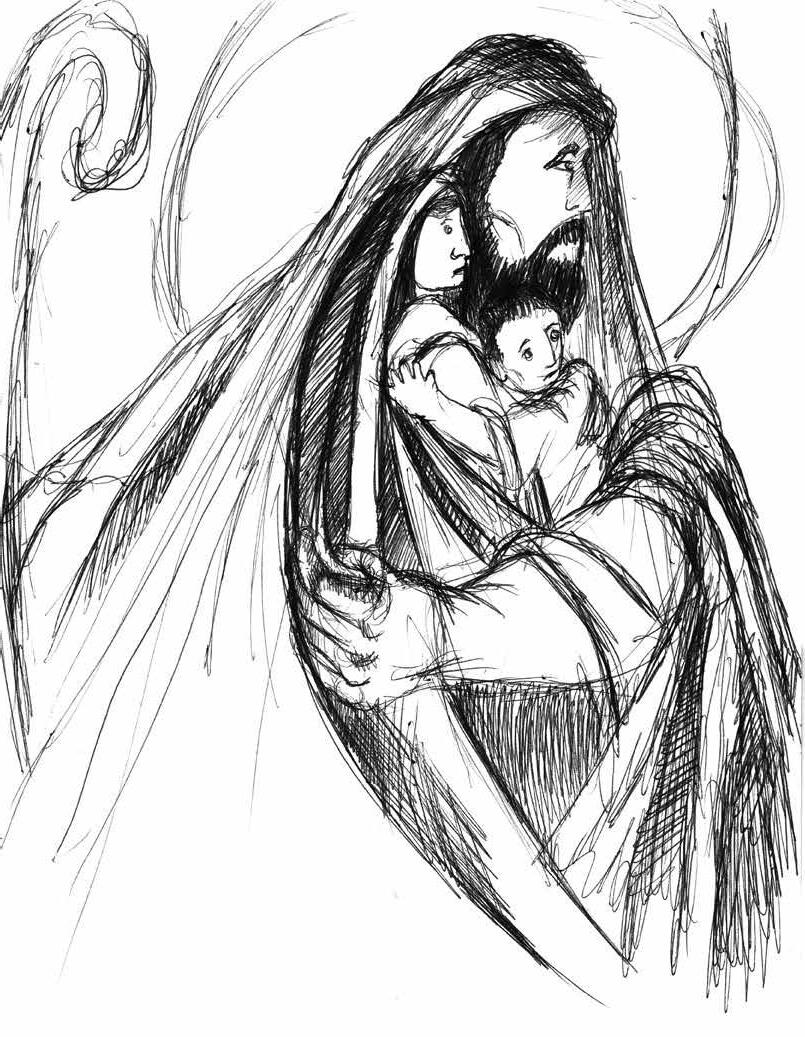
Casa Juan Diego is a part of the Catholic Worker movement.
We depend totally on donations. We do not receive government funding. We are a very few people working without salaries. Casa Juan Diego’s hospitality is overwhelmed with new refugees arriving every day.
We have been at capacity especially for the past eight months. We can only give people 10 days in our house of hospitality because there are so many others arriving.
We have to refuse people who have been in the United States. more than a month and sometimes cannot even accept the newest arrivals because of space. Some in the community may remember that in the last two years we had been meeting with County representatives and then City representatives, along with people from various non-profits and even U.S. Representatives regarding preparations for new arrivals. The outcome of the discussions always seemed to be — maybe Casa Juan Diego can do it all. We cannot, but we do what we can.
People not being served in Houston:
1. Crisis in Houston for homeless families. Casa Juan Diego can no longer receive immigrants and refugees who have been living in Houston and then become homeless. Where can we refer these undocumented families, especially those with young children? Rentals are more expensive each day and more people are being evicted.
2. Shelters in Houston. as we understand it, no longer receive undocumented people or new immigrants.
3. Casa Juan Diego can no longer receive battered immigrant women who have been living in Houston because of the numbers of people arriving here. They are referred to the Houston Area Women’s Center.
1. Transportation to Immigration check-ins.
2. Small resettlement program. Casa Juan Diego is able to continue receiving refugees each day because of our very small resettlement program, helping people (in a small way) begin anew.
3. We assist pregnant new arrivals living in our house with CHIP applications for prenatal care and childbirth and with the application for WIC.
4. We assist our guests to apply for the Harris Health Gold Card. In addition we have volunteer doctors who see our guests here.
5. Refugees and immigrants who leave our house or who are living elsewhere in Houston return each week for a bag of groceries. About one thousand people come to our food distributions each week. Thank you Houston Food Bank and volunteers.
6. We try to connect special needs children living in Casa Juan Diego with community resources.
7. The San Jose Clinic helps us with referrals for medical services that cannot be provided by our own clinic.
Many people find Casa Juan Diego on their own, more people than we can handle. Or people in the Houston community find new refugees on the streets and bring them to Casa Juan Diego.
the City
do
(In addition to providing more housing)
Open a service to help people apply for work permits (as other cities are doing). Application for a work permit is not complicated in the way an asylum application would be. Those eligible for the new work permit application process (from selected countries) need to have been given parole at the border, have received an I-94 form, and have identification (a passport or ID from their country). The new refugees who receive work permits would be a great resource for employers in the community.
Preservation of the Faith Press published Dorothy Day’s From Union Square to Rome on November 26, 1938, about eighty-five years from Orbis Books’ release of a new edition with a Foreword by Pope Francis. In August 2023, the Vatican Press published an Italian translation with Pope Francis’s original Italian Foreword.
As with many authors, Dorothy was unhappy with her editor’s choice for the book’s original title. She felt it portrayed her conversion to Catholicism as too dramatic a break with her past. Most noteworthy about the Italian edition is its new title: Ho trovato Dio attraverso i Suoi poveri (I Found God Through His Poor) and subtitle Dall ateismo alla fede:il mio cammino interiore (From Atheism to Faith: My Inner Journey). As the word cammino (road, highway) suggests, the new title emphasizes Dorothy’s conversion to Catholicism as a journey rather than a break with her radical past. She remained a writer/editor with deep compassion for the poor, but these were taken up into a larger whole she came to call the Mystical Body of Christ.
Most readers will have heard of Orbis Books and perhaps the Vatican Press. It’s a good bet, however, that most have never heard of Preservation of the Faith Press nor its young editor and Dorothy’s good friend, Joachim Benson, ST. Thirty -four-years-old in 1938, Benson was a Missionary Servant of the Most Holy Trinity, a community founded by Thomas A. Judge, CM (d.1933) in 1921. In 1934 Benson started a literary magazine entitled Preservation of the Faith. The name comes from the motto Fr. Judge had given his fledging community, For the Preservation of the Faith. By 1938 the editors of Orate Fratres called Preservation “one of the liveliest, militantly intelligent monthlies in America.”
From 1934-1941, Dorothy contributed frequently to Preservation. In fact, twelve of the series of fourteen “Letters to an Agnostic,” addressed to her brother John as an apologia for her turning
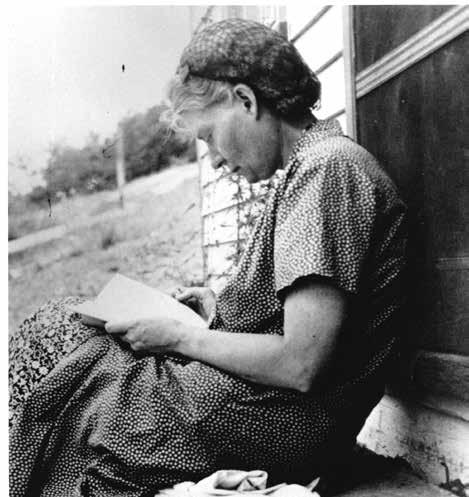
from radicalism to Catholicism, appeared in Preservation. Along with a journal, she kept while living on Staten Island in the mid-1920s, these articles formed the core of From Union Square to Rome.
Benson met Dorothy in 1934 when he was still a student at Catholic University, and she had just founded the Catholic Worker. Their correspondence in the Marquette University Archives extends from 1935 to 1948 and attests to their close friendship. Benson felt a strong affinity between the Catholic Worker and both Fr. Judge’s austere lifestyle and his commitment to the poor and abandoned. Unfortunately, Benson destroyed Dorothy’s letters to him.
In August 1939, less than a year after From Union Square to Rome appeared, Dorothy’s friend Maisie Ward published her House of Hospitality with the well-known Catholic publisher Sheed & Ward. Why then did Dorothy choose to publish her first book as a Catholic with Benson’s relatively unknown one-person operation, Preservation of the Faith Press?
Her friendship with Benson certainly played a role. The main reason, however, concerns Catholic perceptions of Dorothy and her work and with her life before her conversion. She had yet to become the historical figure she is today. In 1938 many Catholic New Yorkers would have found it hard to imagine a pope referring to her before Congress in the same breath with Abraham Lincoln or her cause for canonization moving forward in Rome. This would be especially true for regular readers of Patrick Scanlan’s Brooklyn Tablet with its many criticisms of the Worker.
In the face of such criticisms, Cardinal Patrick Hayes of New York appointed Joseph McSorley, CSP, who was also Dorothy’s spiritual director at this time, as the Catholic Worker’s “approved adviser.” In this capacity, McSorley fielded complaints about Dorothy, the paper, and Worker activities that came to the chancery office.
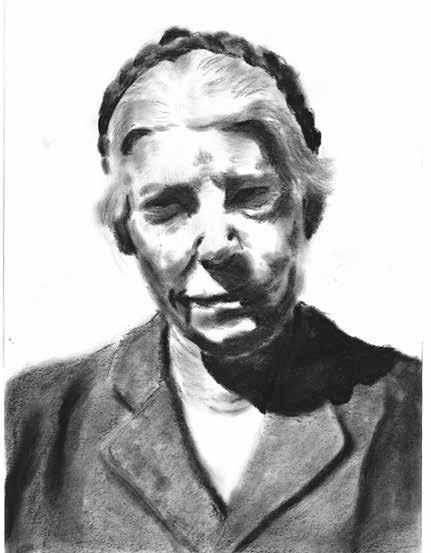
Remembered as the “Cardinal of Charities,” Hayes’s appointment of such a sympathetic figure was no doubt a sign of his support for the work.
In Dorothy’s own words, McSorley “knew instinctively that as a woman, as a convert, I was filled with uncertainties, always coming away from engagements with the feeling that I was inadequate, had said what I had not intended to say, had talked for too long about irrelevancies, had not ‘made my point,’ as Peter Maurin would say. McSorley’s advice to Dorothy was simply, “Go where you are invited.”
As these words suggest, Dorothy’s situation as a woman in a male-dominated church, who had not been a Catholic for very long, had a clear gender dynamic. In the 1930s, she sought guidance and support from sympathetic priests who knew their way around writing and editing in the Catholic Church. Among others, were McSorley, Paul Hanly Furfey, fiery young chair of the Catholic University Sociology Department, also a frequent contributor to Preservation, and, in the case of From Union Square to Rome, Benson himself. All were strong admirers and supporters of Dorothy and the Worker and considered it their task to “protect” her from the criticisms that might come her way.
Dorothy wove together a draft for the book from previous articles and journal entries and put it in Benson’s hands to do with as he saw fit. The big difference between this book and House of Hospitality is that the latter was clearly a Catholic book that begins with a dramatic account of Dorothy’s first meeting with Peter Maurin. From Union Square to Rome was a more risky and potentially controversial project dealing with her early life on the radical left and deep sympathy for the communist cause on behalf of the poor.
With war looming and anti-communism on the rise, the correspondence among Benson, Furfey, McSorley, and others, makes clear that their main concern was whether Dorothy had sufficiently Continued pg. 6
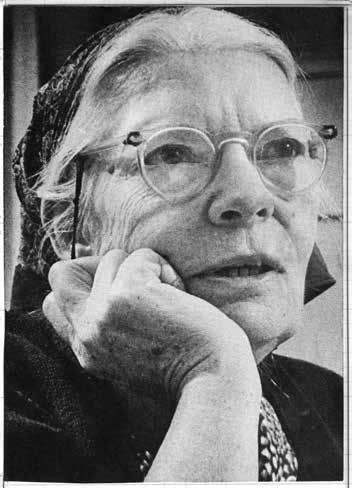
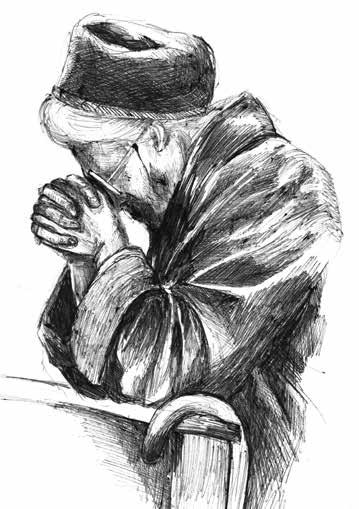
Hello, and greetings from the Dorothy Day Guild!
You might know that we received a really important canonization update last month: the Dicastery for the Causes of Saints in Rome appointed Monsignor Maurizio Tagliaferri as the relator for Dorothy’s cause! Our Guild steering committee, George Horton, Deirdre Cornell, and Dr. Kevin Ahern, met with our postulator, Dr. Waldery Hilgeman, at the beginning of November, when he shared this news. This was a great gift for Dorothy’s birthday on November 8th and her anniversary of death on November 29th! All of us here at the Guild are thrilled with this development, and we wanted to take this opportunity to explain what happens at this stage of the canonization process and outline the next steps towards sainthood for our members. Our Guild has benefited from years of guidance and support from our postulator in Rome, Dr. Waldery Hilgeman, and he graciously shared a lot of background information on this stage in the process when he met with our steering committee last month. Two years ago, on December 8th, 2021, the diocesan phase of the canonization process formally concluded when the boxes of material evidencing Dorothy’s holiness were sealed at a celebratory mass at St. Patrick’s Cathedral in New York and sent to the Vatican. Over the summer, we learned that the Dicastery for the Causes of Saints officials had completed the first review of the materials we sent them and had given their stamp of approval on the work completed during the diocesan phase of the canonization process–a significant hurdle to pass, indicating that the transcriptions, testimonies, and eye-witness interviews had all been conducted according to the juridical norms of the Dicastery. Since then, we have been eagerly awaiting news that the relator, the person appointed by the Dicastery to provide a
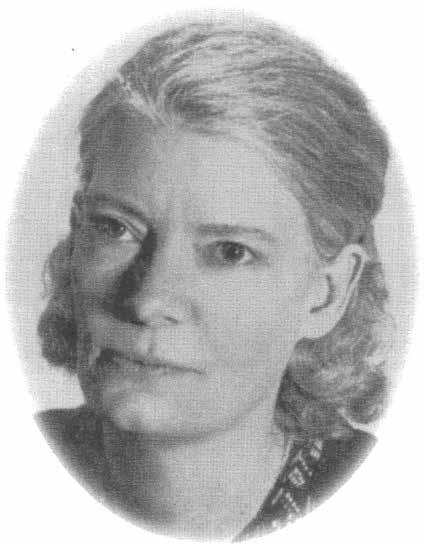
thorough and objective report on the life, virtues, and reputation of holiness of the individual being considered for canonization, has been appointed.
The relator has a few key duties, all of which contribute to ensuring that the process of canonization is thorough, fair, and in accordance with the established procedures of the Dicastery. His primary work is in the compilation of the positio, which is a comprehensive, detailed account of Dorothy’s life, virtues and holiness. As our postulator, Dr. Hilgeman and his team will continue to work closely with Monsignor Tagliaferri in the preparation of the positio. This document serves as the basis for further discussion and evaluation with the larger body of the Dicastery. In order to put this document together, the relator is responsible for analyzing the results of the diocesan inquiry, which we concluded two years ago when we sent our boxes of evidence to Rome. Right now, this is what Monsignor Tagliaferri is working on for our cause. During our advisory committee meeting in June, Dr. Hilgeman shared with us some of his hopes for the type of person who would be appointed as our relator for Dorothy’s process. Dr. Hilgeman told us that finding the right person for the job sometimes takes months because the saints are so diverse in their particular expressions of sanctity, their historical contexts, and their linguistic and cultural backgrounds. The relator’s contribution to this stage of the canonization process is in ensuring the accuracy of the factual narrative of the candidate’s life and accuracy in the historical details of the candidate’s time and place. In our case, we needed a relator who was able to write and conduct research in English, and who was familiar with the nuances of American culture and the social, economic, and political landscape of the mid-twentieth century. In short, we needed
someone who would understand Dorothy, and as you know, she is not an easy figure to categorize! We are so pleased with the selection of Monsignor Tagliaferri, who has worked on a number of other American sainthood causes that are dear to many of our members, including two of the Saintly Six Black American “Saints in Waiting,”Venerable Augustus Tolton and Servant of God Julia Greeley. All of us at the Guild feel that Dorothy’s cause is in capable and devoted hands.
Much of the relator’s work involves research, so if necessary he may request further collection of historical documents, testimonies and any other relevant evidence. Monsignor Tagliaferri will also work closely with theologians, historians, and other experts to ensure that the positio is accurate, thorough, and in accordance with the theological and canonical requirements for canonization. As a journalist whose career spanned six decades and a lifelong diarist, Dorothy’s body of written work is extensive, and because of this, the compilation of her positio may take longer than that of a lessliterary saint. Many of us who are eager for her canonization feel blessed by the level of insight that this quantity of writing provides us into her life and legacy while occasionally wishing that she had been briefer in print! Eventually, upon completion, Monsignor Tagliferri will present Dorothy’s positio to the theological and historical consultors and the members of the Dicastery for the Causes of Saints, and make a clear and reasoned case for her canonization. Monsignor Tagliaferri will participate in the discussions and deliberations of the Congregation, offering insights and responses to questions raised by other members and giving his recommendation for her beatification and eventual canonization. Once the positio has been accepted by the Dicastery, Pope Francis may declare Dorothy “Venerable,” the next official stage in the canonization process. Continued pg. 6
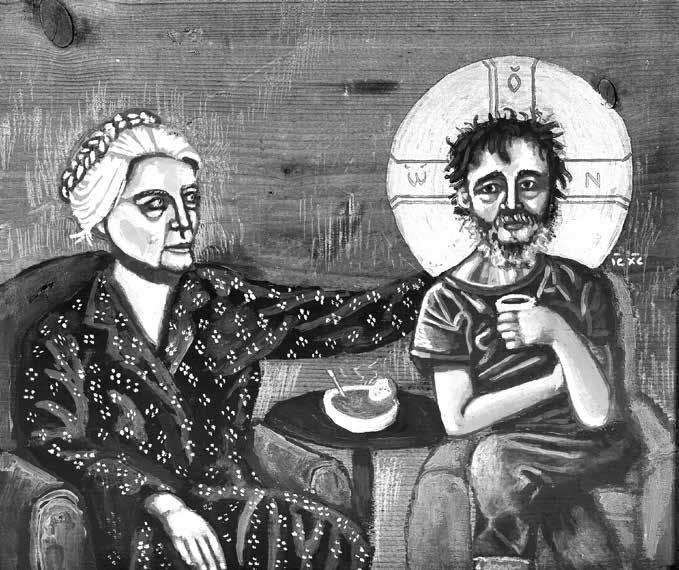
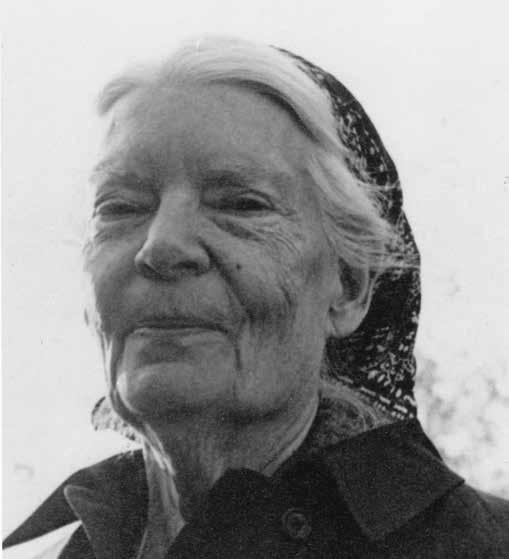
distanced herself from communism and made clear her loyalty to the church. From a distance of eighty-five years, their fears could appear overblown. One only need consult McSorley’s ringing defense of Dorothy in his review of the book in Catholic World. Comparing Catholic Workers to the early Christians, it reads as a preemptive catalog of all the criticisms then being leveled at Dorothy and the Worker.
Despite such criticisms and fears, the book’s deep theological heart centers on the Mystical Body of Christ. From Union Square to Rome should be read as Dorothy’s pursuit of very personal questions about whether her life was a journey or a break. Concerned, both for the sake of her pre-conversion self and for former fellow leftists,
she wanted to know whether we could love Christ without knowing him. She found solace in Mt 25:40, “Truly I say to you, as you did it to one of the least of my brethren, you did it to me.”
“Feeling as strongly as I did about this verse,” Dorothy asked, “is it any wonder that I was led finally to the feet of Christ?” In explaining her rejection of communism, she invoked the Mystical Body: “We believe that all men are members or potential members of the Mystical Body of Christ and since there is no time with God, we must consider each man whether he is atheist, Jew, or Christian.”
Jacques Maritain, whose own journey to faith has similarities to Dorothy’s, greatly admired this book and arranged for a French translation to be
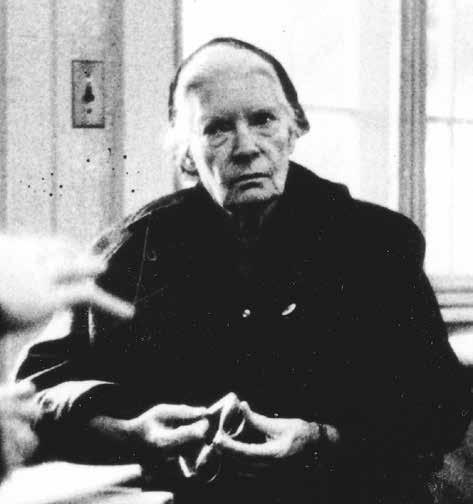
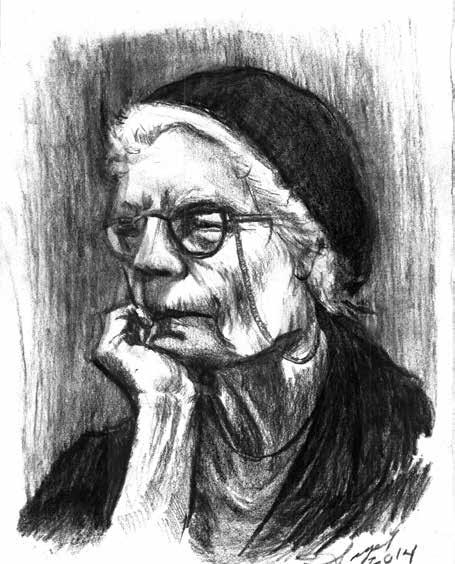
published by Desclée de Brouwer, one of Paris’s leading Catholic publishers. Benson and Desclée finalized the agreement on September 1, 1939. Two days later, following the German invasion of Poland, France declared war on Germany. In the ensuing chaos, Maritain’s proposal came to naught. We now have an Italian translation with a Foreword by the pope and a title that better conveys Dorothy’s journey.
William L. Portier is Emeritus Professor at the University of Dayton and Theologian in Residence at Mount St. Mary’s University, MD.
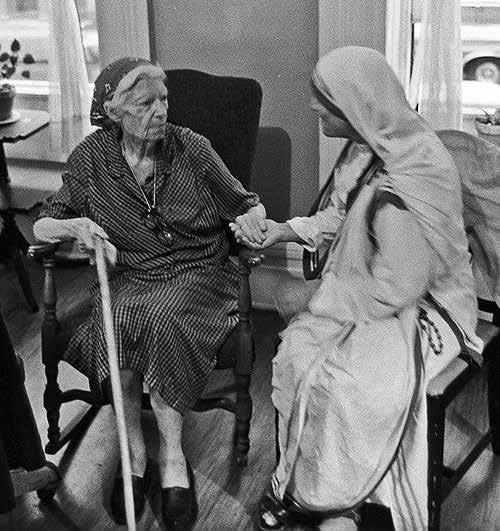
As the postulator for Dorothy’s cause, Dr. Hilgeman is our advocate in Rome. We’ve used the phrase “canonization process” in Guild newsletters and publications; declaring someone to be a saint is a ‘process’ in the legal sense of the word. Dr. Hilgeman is a canon lawyer, and his close collaboration with Monsignor Tagliaferri ensures the entire process aligns with the established legal and canonical requirements for beatification and eventually canonization. While the relator’s role is focused on historical and factual details of the candidate’s life, Dr. Hilgeman’s task is to present a compelling case for Dorothy’s sanctity, often focusing on the theological and pastoral dimensions of her witness to the Gospel. Throughout this stage of the canonization process, Dr. Hilgeman and Monsignor Tagliaferri will collaborate on research using the evidence gathered during the diocesan phase. As our advocate, Dr. Hilgeman will also work closely with the Dorothy Day Guild, gathering accounts of the widespread devotion
to Dorothy among various Catholic communities in the United States and globally, as well as any accounts of special graces and favors you may have received while praying through Dorothy’s intercession. Waldery will continue to engage with the theologians, historians, doctors, and other experts who are charged with evaluating Dorothy’s case in order to provide a well-rounded perspective on her life, virtues, and reputation for holiness and will stay in close contact with the Dicastery, offering support and clarification to those who will be in charge of making recommendations on Dorothy’s cause in the future.
While we don’t know exactly how long it will take for Monsignor Tagliaferri, Dr. Hilgeman, and their team to complete the positio, the stage of the canonization process that we are in now, from the beginning of the Roman phase of the cause to the moment where the candidate is declared Venerable, typically takes between two and five
continued from pg. 5
years. Since the Roman phase began when the evidence of Dorothy’s sanctity was delivered to the Vatican two years ago, we hope that this moment is coming within the next three years. Once the positio has been officially submitted to the Dicastery, it undergoes an examination by nine theologians who vote on whether or not Dorothy lived a heroic life. According to the USCCB, “If the majority of the theologians are in favor, the cause is passed on for examination by cardinals and bishops who are members of the [Dicastery].” If these cardinals and bishops vote yes, the head of the Dicastery presents the results to Pope Francis, who can then give his approval and authorize the Dicastery to draft a decree declaring Dorothy Venerable. Here’s how you can help: keep praying! We need your prayers at this stage of the cause more than ever. Pray for Dorothy’s canonization, and especially pray through her intercession, asking her to bring your needs and the needs of our world to Christ. It is a HUGE help to Dr. Hilgeman.
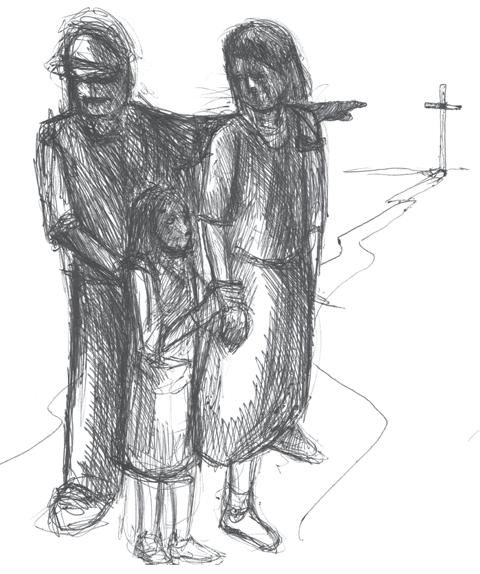
You shall not molest or oppress an alien, for you were once aliens yourselves in the land of Egypt. You shall not wrong any widow or orphan. If ever you wrong them and they cry out to me, I will surely hear their cry. My wrath will flare up, and I will kill you with the sword; then your own wives will be widows, and your children orphans.
If you lend money to one of your poor neighbors among my people, you shall not act like an extortioner toward him by demanding interest from him.
If you take your neighbor’s cloak as a pledge, you shall return it to him before sunset; for this cloak of his is the only covering he has for his body. What else has he to sleep in?
If he cries out to me, I will hear him; for I am compassionate.
— Exodus 22:20-26
To Catholic Workers and Volunteers, Thank you! The Oct.-Dec. 2023 issue was one of the best preparations I have ever had in my 94 years, and 65 years as a priest in Kentucky. The CJD issue says there are two things going on in history –-“people’s activity and God’s grace.” Every line of the issue clearly brings this out. Please continue sending me the Houston Catholic Worker. God’s blessings – enjoy his grace.
Father Verne Hogan, Covington, Kentucky
Louise and all the Catholic Workers of Casa Juan Diego: Your October-December Catholic Worker publication was outstanding and heartwarming. The article by Dawn McCarty, “The Children of Casa Juan Diego” touched my heart as a teacher of primary children for 34 years and also, the oldest of my siblings, having been blessed with 14 children in our Catholic family. Please use this donation to help the “angels” (children) you care for in Casa Juan Diego. Prayerfully, Judy Armstrong, Wausau, Wisconsin
Queridos Hermanos de Casa Juan Diego, Gracias por las palabras de John Henry Newman en el periódico. Un Adviento de esperanza. Felliz Navidad
Monsignor Ed Wetterer, Jackson Heights, NY
Dear Louise and Friends, Praying for peace in the Holy Land and in our homes and neighborhoods. I feel help knowing that you embrace refugees, each one a brother or sister to us all. Thank you for all you do and for the light you shine in the face of so much darkness.
Barbara Mangione, South Bend, Indiana

Hooded sweatshirts for men Jackets
Blankets
Shampoo
Conditioner
Deodorant
Small bottles of lotion
Toothbrushes
Toothpaste
Back packs and duffel bags for travelers
Toilet tissue
Paper towels
Laundry Soap
Adult diapers – Depends pullups Bed pads Baby wipes
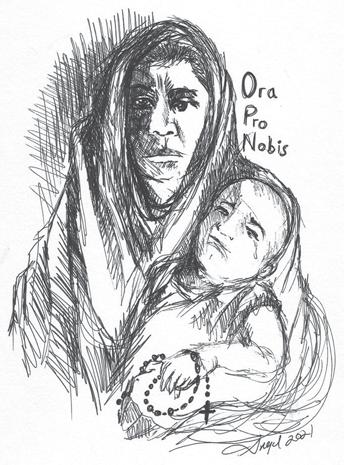
Pray for us and our guests.
Donations may be dropped off or shipped to:
Twelve Billionaires’ Climate Emissions Outpollute 2.1 Million Homes, Analysis Finds
Migrants Risk the Dangerous Trip to the U.S. Because It’s Safer Than Staying at Home
How the World’s Two Largest Polluters, U.S. and China, Stack Up
More Than 100 Million People Forcibly Displaced: UNHCR Report
Some Climate Impacts are Already So Severe They Cannot be Adapted
Whales are the Largest Consumers of Plastic Waste
Few Willing to Change Lifestyle to Save the Planet, Climate Survey Finds
World War III May Have Already Started
Religion Against the Machine: Pope Francis takes on AI
How are Christians to understand and relate to the world? Bouyer presents two views from the Bible. Sometimes it seems that in the Bible “the world” denotes the universe “which remains alien or even hostile.” This is the sense in the words of the First Epistle of St. John: “Do not love the world or the things in the world… for the whole world is in the power of the evil one.” Elsewhere, on the contrary, God’s love for the world is strongly expressed: “For God so loved the world that he gave his only Son, that whoever believes in him should not perish but have eternal life.” Again according to St. John, but this time in the Gospel (Bouyer, p. 3).
The two contrasting views of the world presented in the Bible remind us that God did not want the iniquity we see around us in his creation.
We are all familiar with the story in the book of Genesis of the Fall of Adam and Eve and their loss of the Garden of Eden. From the very first, there were divisions and Bouyer describes not just the one Fall, but several Falls: The first when some of the angels fell and turned against God, then the fall of humankind, the fall of the cosmos itself, the time of Noah and the flood, and the Tower of Babel. Bouyer says, “The fall of a large number of angels made them the first evildoers. Man, by following their suggestion, was included in their degradation, along with the earth from which man had been drawn and which had been entrusted to him” (91-92). From the beginning of the universe, these hostile powers were in a
“mortal struggle” against God. Bouyer points out that in each case creatures set themselves up in opposition to God, trying to be gods themselves.
With the Incarnation Jesus went out into the desert and there was tempted by Satan. Bouyer writes: “There is an obvious correlation between this temptation and the original fall of man, as described in Genesis. This time, however, man emerges victorious. The hymn in Philippians 2 acclaims Jesus as the new Adam”… who “chose faithfulness to the Fatherly Word rather than surrender to the blandishments of the tempter, and in so doing exposed Satan’s snares for all time.” In spite of this, the temptations to want to run the world continue today.
According to Bouyer, iniquity still exists in the one called by St. Paul in II Corinthians “the god of this world who is obviously the serpent of Genesis, Satan, Job’s accuser and tempter, the apocalyptic Belial.”
During the 1970s, some who had seemed to endorse Catholicism lite or Christianity lite suggested that we not speak any more of principalities and powers, fallen angels, sin or Satan. That was old-fashioned. Some of our readers may remember Fr. Daniel Berrigan, who prophetically spoke and acted against the United States’ involvement in the Vietnam War. As we talked with Fr. Dan in the early 1970s. he reminded us that it was impossible not to realize, in the light of world events, that what the Scriptures said about principalities and powers is true.
Bouyer reminds us that demonic spirits have been overcome by Christ on his cross. We know that the Kingdom of God is already here, in us through the Spirit, and in the Lord before his Passion and glorification. But as Bouyer also reminds us, “it ‘suffereth violence,’ i.e., it is hidden by the still persisting externals of Belial’s reign.”
It would seem that “persisting externals of Belial’s reign” conspire still in the struggle of goodness against iniquity, between light and darkness – in the very threats to our physical world, the wars and divisions, plights of refugees, and uncontrolled technology mentioned at the beginning of this article.
We know in our hearts that Christ has overcome sin and death. We ask ourselves how we can best participate with him in overcoming the iniquity in the cosmos. As Catholic Workers we were struck by Bouyer’s statement that, “Man can recover true life and preserve the cosmos only by rediscovering that a certain voluntary poverty is the condition for possessing the word in a way that will not reduce it to ashes.” (160) Bouyer is speaking here, as did Peter Maurin and Dorothy Day, of the detachment taught to Christians from the time of the early Church.
In a consumer culture, often this vision of voluntary poverty is lost. Bouyer recounts that in earlier centuries, human persons saw the world “as a meaningful cosmos oriented toward transcendence, a sense of which had previously been imparted to our lives by contemplation of the universe.” As early as the fifteenth century, though, and in the following centuries, “we see Christianity degenerate into a mere support or cover for a society which followed instead the bourgeois ideal in a society ‘based directly and perhaps exclusively on money.’”(122) Bouyer starkly declares that “Wealth became the supreme means of gaining, in this world, not only a much coveted (through rarely if ever attained) security, but also what was to be called comfort… This new civilization was
progressively to inactivate all specifically Christian characteristics, simply by substituting the worship of Mammon for that of Christ, while maintaining Christian forms “ (p. 121-122).
This worship of money (avarice, one of the capital sins) is directly related to the destruction of the cosmos through pollution, green house gases, overuse of plastics and other harmful chemicals, the development and sale of terrifying weapons, and for example, the exploitation of the earth to the detriment of poor workers. Few in power are willing to sacrifice their wealth.
Already in 1982 Bouyer published his critique of technology in Cosmos: “Evidence of this explosive and demonic progress of a technology that is good in itself toward an exclusively technological ideal is shown in the increasing tendency to substitute a wasteful economy of conspicuous consumption, destructive of natural resources, for the various economies, now considered obsolete, which allowed or positively promoted renewal of these recourses, by respecting the natural rhythms of plant and animal life.” A danger is that “Not only does it replace the original vitality of the cosmos with an accumulation of machines—in fact turning the entire cosmos and all human society into a monstrous machine operating to no useful purpose.” (p. 158)
Pope Francis has told us that a mistaken technocratic paradigm affects economics, ecology, and our whole world view:
“In’ Laudato Si’, I offered a brief resumé of the technocratic paradigm underlying the current process of environmental decay. It is “a certain way of understanding human life and activity that has gone awry, to the serious detriment of the world around us.” Deep down, it consists in thinking as if reality, goodness and truth automatically flow from technological and economic power as such. As a logical consequence, it then becomes easy to accept the idea of infinite or unlimited growth, which proves so attractive to economists, financiers and experts in technology.” (Pope Francis, Laudate Deum 20)
In his most recent Message for the World Day of Peace, where he called for guidelines for the use of Artificial Intelligence, Pope Francis repeated his critique of the current dangers of uncontrolled technology, of acting as if we were gods and ignoring the potentially evil consequences of the wrong use of technology:
“Human beings are, by definition, mortal; by proposing to overcome every limit through technology, in an obsessive desire to control everything, we risk losing control over ourselves; in the quest for an absolute freedom, we risk falling into the spiral of a ‘technological dictatorship,’ “Recognizing and accepting our limits as creatures is an indispensable condition for reaching, or better, welcoming fulfilment as a gift.” (World Day of Peace Message)
The Cosmos includes much that is not visible to us. We learn from Bouyer that “The world known to us only through faith is more important than the world accessible to our senses. For it is in this invisible world, or rather in the invisible part of the one world. where God dwells and Christ entered, where the souls of the faithful will join
him, and where the angels reside from all time” (240)
Both Bouyer and John Henry Newman (whom Bouyer cites) speak of the presence and role of the angels in the Scriptures, including the Seraphim surrounding God’s throne in chapter 6 of Isaiah, the Cherubim and Ophanim in Ezechiel who became the coursers and fiery wheels of the throne, tracing a flaming furrow throughout the world, the angels descending and ascending on Jacob’s ladder and those in the Book of Revelation. In his sermon, “The Invisible World,” Newman begins by picturing this visible world, one we are so accustomed to that we readily assume there is no other reality beside it. “Yet our experience, if only we were to ponder it as we should, would be enough to convince us that many things, and possibly the more important, in what we call the visible world are in fact invisible, e.g., the feelings in our heart and the working of our mind.” (202)
We hope that we will not have to wait until Christ comes again for our world to be restored to some of its splendor, in spite of the tragedies and sufferings of today. In reading Bouyer, we are given eschatological hope for the transfiguration of the cosmos in the fullness of time:
“Just as death was swallowed up by the Resurrection after the Passion of Jesus, so that henceforth everything is absorbed into the Kingdom, so will it be for us when Christ appears. We will pass through the fire of judgment, so that naught will remain in us except the new man, who is Christ in us, ‘the hope of glory’…In the fullness of time, when all things are done, the whole universe will be transfigured, with our own bodies of flesh, but already the miracles of the saints bear witness to an anticipation of this glorification….
“This transformation, even if it does not mean death as we know it, will always require a heroic alteration, an agonizing reappraisal. Our God is a “consuming fire,” according to Deuteronomy, and Job warns us that the angels themselves cannot endure God’s gaze without being scoured in the deepest recesses of their being.”
In 1962 when I became interested in the Catholic Church, one of the books Mark Zwick gave me to read was Louis Bouyer’s Liturgical Piety. I knew nothing about liturgy at the time. That book helped to give me a profound understanding of the Mass as an action in which the Church participates as a whole in the praise and glory of God and helps us to live in the way the Lord asks us to live.
In Cosmos, published twenty years after Liturgical Piety, Bouyer helps us to understand the cosmic liturgy of which the Fathers of the Church spoke, a liturgy that reflects the light and Mystery of God and the unity of all creation. We can be aware of this as we sing the Holy Holy at Mass, when the priest invites us to join our voices with the choirs of angels, the hosts and powers of heaven, the saints, in praising God. This includes the holy ones who have gone before us. (I am always conscious of Mark’s presence with
us as we sing the Holy Holy at Casa Juan Diego at Mass.) We celebrate God’s glory and beauty in the unity of the visible and the invisible world of persons and all of creation, where Christ is the King of the universe.
Bouyer tells us that “Cosmic contemplation condenses the entire traditional theology of the Church celebrating the Eucharist as mankind’s sharing in cosmic and supra-cosmic liturgy. Through sacramental participation the Savior’s glorifying cross, mankind thus joins the faithful angels, themselves forever celebrating, from the first moment of creation, the Ancient of days.” (202)
In an article entitled “The Eucharist and the Poor: The Real Meaning of the Real Presence,” John Cadavini recently quoted our Holy Father on the cosmic vision of the Eucharist and what it means for our world: “Pope Francis, for his part, speaks about the Eucharist in extravagant terms that presuppose the doctrine of Christ’s substantial presence in the Eucharist:
‘The Eucharist is the living center of the universe, the overflowing core of love and of inexhaustible life. Joined to the incarnate Son, present in the Eucharist, the whole cosmos gives thanks to God.’ The Eucharist thereby ‘sheds light on the whole week and motivates us to greater concern for nature and the poor’ (Laudato si’, 236–37). Creation itself, joined to the cosmic act of love that is the Eucharist, rises to visibility in and with the eucharistic elements.” (Commonweal, Nov. 23, 2023).
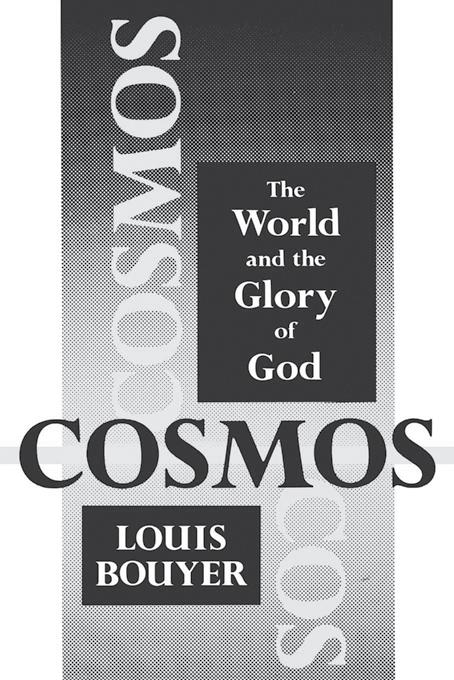
References:
Louis Bouyer, Cosmos The World and the Glory of God. St. Bede’s Publications.1982. 1988.
Pope Francis, Laudate Deum, Laudato Si Robert Imbelli, “Louis Bouyer’s Cosmic Vision : Expriencing the Paschal Mystery.” Commonweal, October 8, 2023.
Keith Lemna, The Apocalypse of Wisdom : Louis Bouyer’s Theological Recovery of the Cosmos. Angelico Press, 2019.
Ed Yong, An Immense World: How Animal Senses Reveal the Hidden Realms Around Us. Random House, 2023.